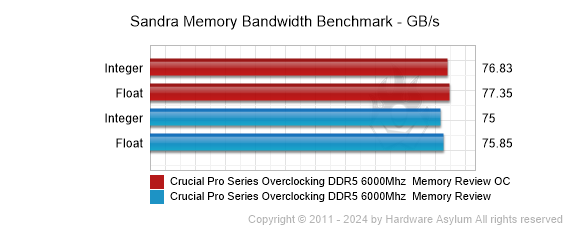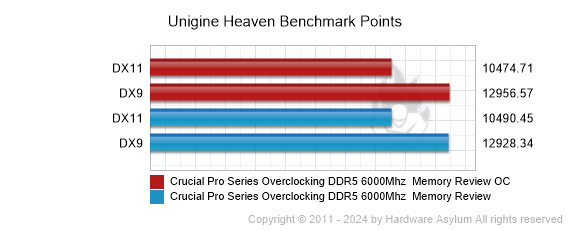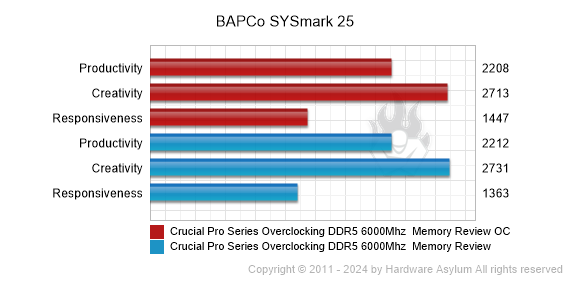Crucial Pro Series Overclocking DDR5 6000Mhz Memory Review
Author: Dennis GarciaBenchmarks - Overclocked
As with all of our reviews, we pit the default speed system against the overclocked one in a head-to-head byte match. The only difference is that with our memory reviews we leave the base system (CPU, Chipset etc..) at default speeds so that the only thing we are changing is the memory module. You can see this with the Sandra CPU Tests and at that point the only performance advantage is from increased memory performance.
There are different approaches to overclocking memory and while you may not get an extra 25FPS in your games the increased bandwidth and lower latencies can often unlock the potential for better system efficiencies.
The effective overclock for these tests was 6500Mhz and to attain these clocks the XMP profile remained enabled with memory frequency being raised to 6500Mhz. Our motherboard bios automatically lowered the timings and I tweaked them a bit however, was unable to adjust voltage and remanied at 1.35v.








Memory overclocking is a pretty arduous task of trial and error. As with most overclocking there is a balance that we want to maintain including the relationship between temperature, voltage and frequency. Given that your system memory also drives CPU performance it is not uncommon to see performance go down with an overclock that has been pushed too far or has a mismatched setting.
What I find amazing is that when I reviewed the first Crucial 5600Mhz DDR5 memory modules I was able to hit an overclock of 6000Mhz with considerably higher timings. This was due to the locked voltage of 1.1v forcing high numbers to remain stable. Now that the XMP profile voltage was raised the Crucial Pro Overclocking memory was set to run 6000Mhz at CL36 with a voltage of 1.35v. From there I was able to overclock them an extra 500Mhz with a few tweaks.
This interaction shows you just how important voltage is to overclocking and how annoying DDR5 modules can be to overclock when the voltage is locked by the onboard power management integrated circuit (PMIC)
Our results show that the engineers tuning these memory modules are pretty smart in how they test and tune. For instance, I was able to hit 6500Mhz+ with these modules by tweaking timings but, the end results showed that performance remained unchanged. This in turn makes the manual overclock a lost ROI.

